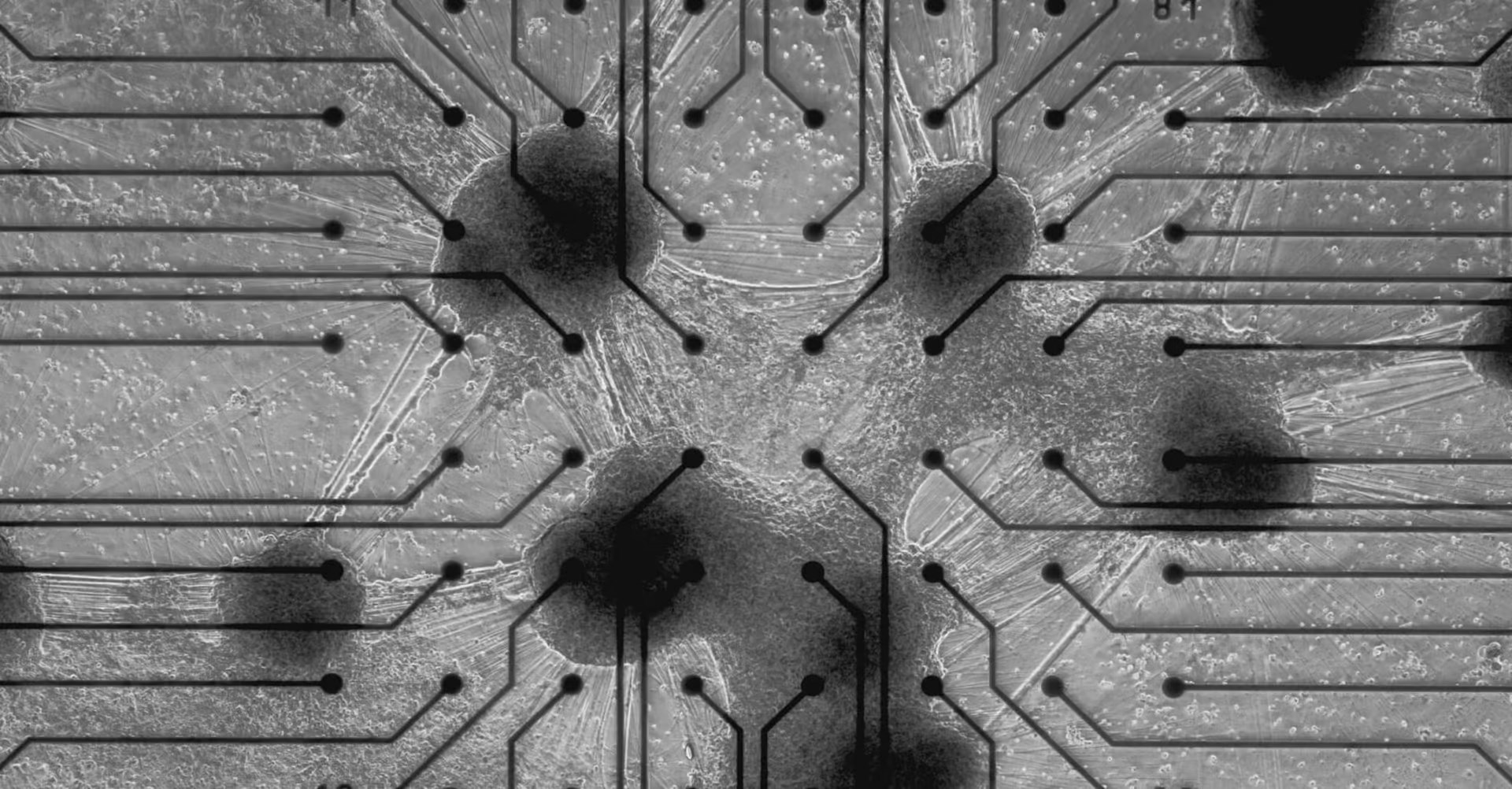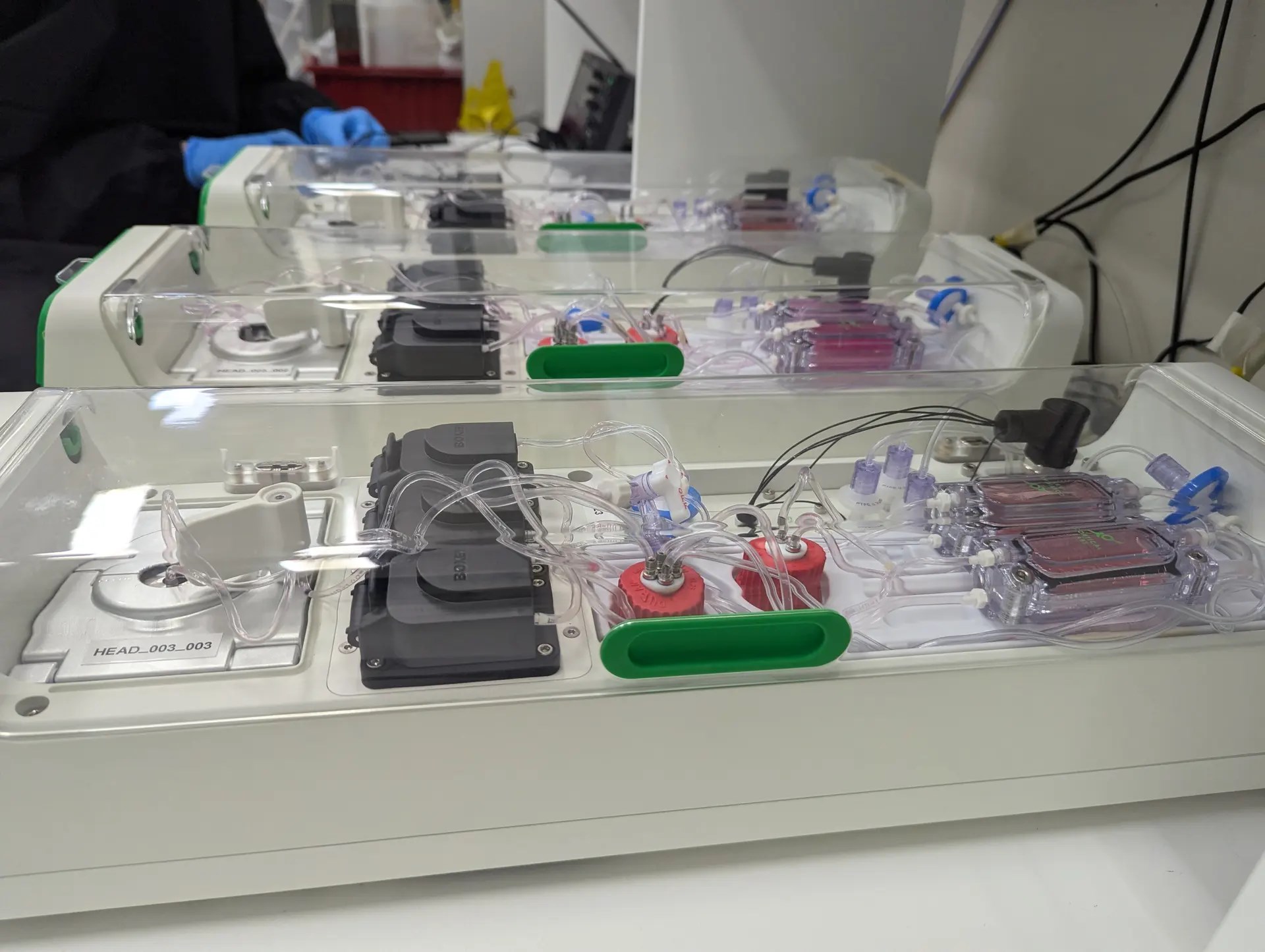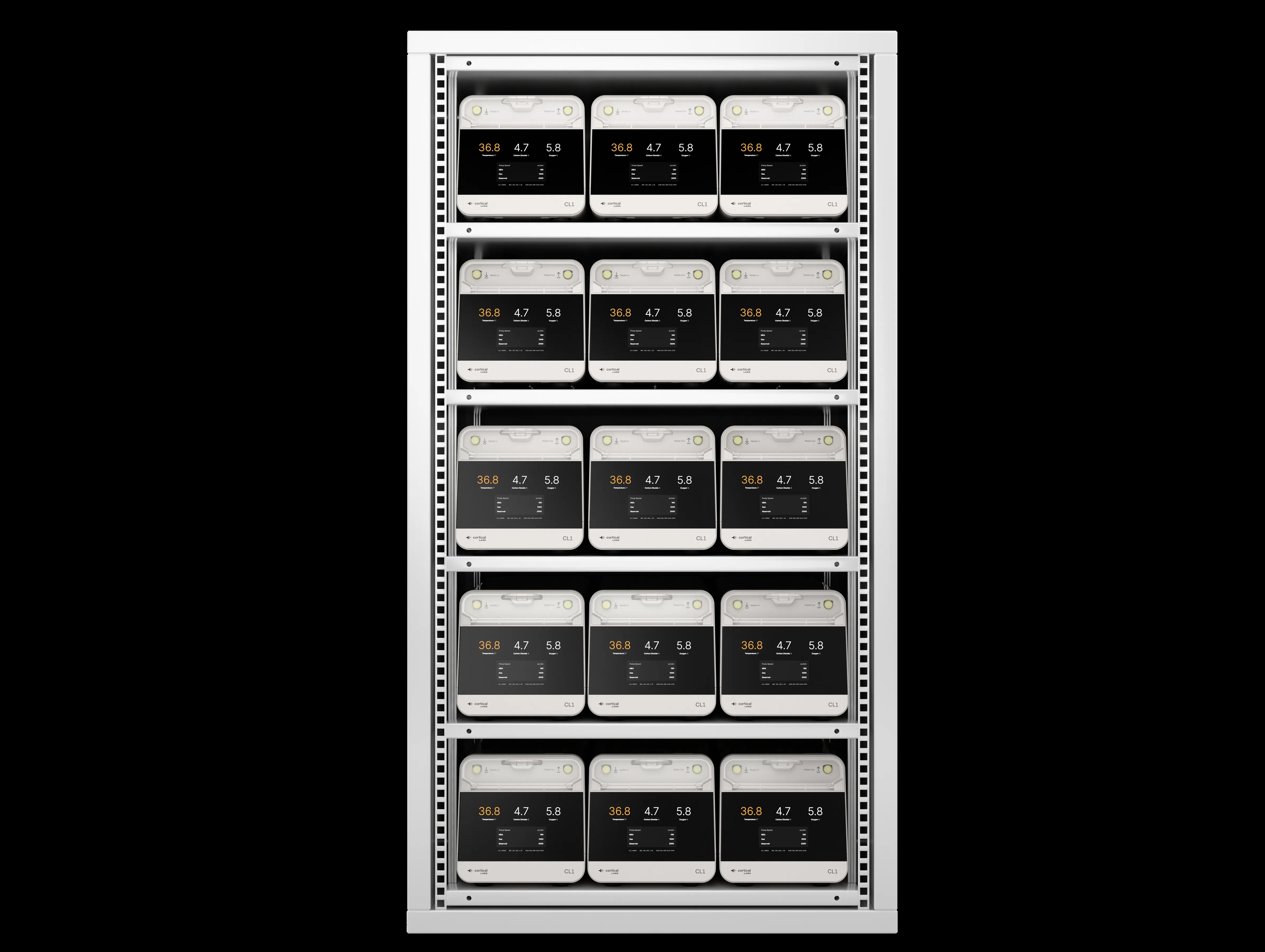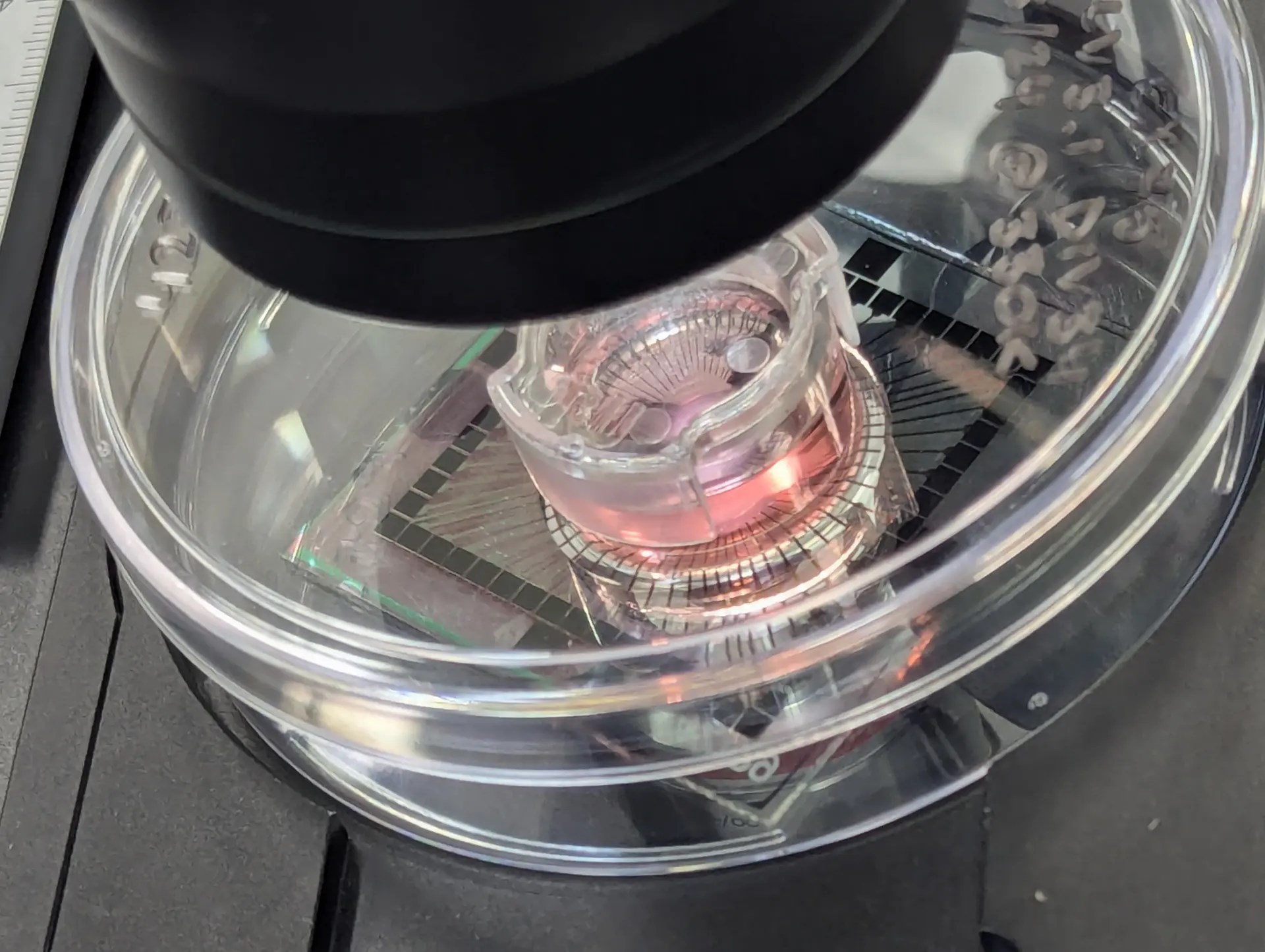 At the end of last year, there was a warm day in Melbourne, while there were hundreds of thousands of living people brain cells in the box that stands on a table. These neurons, which are too small to be seen, are the chief science manager of the Cortical Labs initiative. It was watched by Brett Kagan. Fluctuations similar to the ECG on a monitor showed that neurons responded to inputs from a nearby computer. Simply put, neurons were learning.
At the end of last year, there was a warm day in Melbourne, while there were hundreds of thousands of living people brain cells in the box that stands on a table. These neurons, which are too small to be seen, are the chief science manager of the Cortical Labs initiative. It was watched by Brett Kagan. Fluctuations similar to the ECG on a monitor showed that neurons responded to inputs from a nearby computer. Simply put, neurons were learning.Now Cortical Labs introduced the CL1 product, which they define as the world’s first commercial biological computer, at the MWC conference in Barcelona. The CL1, which contains hundreds of thousands of laboratory productions ranging from an ant and cockroach brain size, is introduced as a system ready to learn. The company calls this technology as “Synthetic Biological Intelligence”.
Cortical Labs has been working for six years to improve this technology. The “Dishbrain” project, announced in 2022, had brought together 800,000 brain cells to learn the Pong game. This success showed that biological intelligence can exhibit behaviors for certain goals through education.
Dr. Kagan says that this technology can be used in areas such as disease modeling or drug tests. However, Cortical Labs’s ultimate goal is to use these small neuron collections as biological artificial intelligence.
A “thing that consumes less, less energy and develops constantly
 The main idea behind CL1 is that companies like Google and OpenAI are trying to develop artificial intelligence working like the human brain. So, why shouldn’t the same goal be achieved by using brain neurons directly? So far, only biological brains have reached an advanced development that could show general intelligence. However, it is not an artificial intelligence like CL1, Chatgpt or Dall-e, where neurons meet in a cultural container. However, biological neurons have some internal advantages. For example, the existing artificial intelligence models consume large amounts of energy, while CL1 consumes only a few Watts (850-1,000 W). The second important advantage is the learning rate of biological brains.
The main idea behind CL1 is that companies like Google and OpenAI are trying to develop artificial intelligence working like the human brain. So, why shouldn’t the same goal be achieved by using brain neurons directly? So far, only biological brains have reached an advanced development that could show general intelligence. However, it is not an artificial intelligence like CL1, Chatgpt or Dall-e, where neurons meet in a cultural container. However, biological neurons have some internal advantages. For example, the existing artificial intelligence models consume large amounts of energy, while CL1 consumes only a few Watts (850-1,000 W). The second important advantage is the learning rate of biological brains.CL1 has a constantly developing organic network structure created by the combination of human brain cells and silicone equipment, which offers a much more dynamic, sustainable and energy -efficient artificial intelligence potential than existing artificial intelligence technologies. These cells are placed on a silicone chip and can send and take electrical signals.
The Cortical Labs’s CL1 system is designed to create biological neural networks highly efficiently and mimic the functions of the human brain. In this system, neurons grown in the laboratory are located on a special electrode sequence, so that nervous networks develop dynamically.
CL1’s hardware is quite simple and stable; At the same time, a more stable and energy efficient work can be achieved thanks to the improvements in ‘wetware’, ie biological equipment. For now, these biological networks are able to exchange information independently, and this technology is considered an important stage in the evolution of artificial intelligence.
Another important feature of this structure is that Cortical Labs is integrated with Biological Intelligence Operating System, Bios). In this way, users can send code through neurons and perform calculation. A life support system within the CL1 can keep neurons alive for six months with pump, gas and temperature control mechanisms.
Combining biological intelligence with traditional computer sciences, it aims to create the “most perfect learning machine”. Infinite flexibility and self -programming ability of biological nervous systems highlight this technology as a revolutionary step.
Each unit 35 thousand dollars
 The company aims to offer this technology with a cloud -based system. So, without having to buy a CL1 device, users will be able to access these biological computers through the cloud and do their own research. Cortical Labs plans to make CL1 widely available in the second half of 2025. Units are expected to have a price tag of approximately $ 35,000 to start.
The company aims to offer this technology with a cloud -based system. So, without having to buy a CL1 device, users will be able to access these biological computers through the cloud and do their own research. Cortical Labs plans to make CL1 widely available in the second half of 2025. Units are expected to have a price tag of approximately $ 35,000 to start.The Cortical Labs’s CL1 Biological computer system has the potential to revolutionize not only in artificial intelligence and medical research, but also in understanding the structural and functional basic components of the human brain. The company’s goal is to create a more complex artificial brain modeling by imitating the brain’s work at the most minimal level.
“We don’t want to create a painful being”
 Although the progress creates excitement, small neuron clusters – bay organoids – bring some ethical dilemmas to the agenda. Every scientist working with brain organoids is probably thinking about the ethical dimension of their work. Although existing organoids are not yet as complex as a human brain, there is a concern that larger and developed neuron networks can gain consciousness or realize their own being in the future. In fact, at some point, it is suggested that they can gain similar abilities.
Although the progress creates excitement, small neuron clusters – bay organoids – bring some ethical dilemmas to the agenda. Every scientist working with brain organoids is probably thinking about the ethical dimension of their work. Although existing organoids are not yet as complex as a human brain, there is a concern that larger and developed neuron networks can gain consciousness or realize their own being in the future. In fact, at some point, it is suggested that they can gain similar abilities.Dr. Kagan states that they consider these potential ethical problems. However, the area admits that they do not know where to draw ethical boundaries because they are very new. Dr. Kagan said, “That’s why we work with many bioethists. We do not want to create an existence in a cultural container. Instead, they aim to use neurons as a kind of circuit and constantly test the functioning of the system.